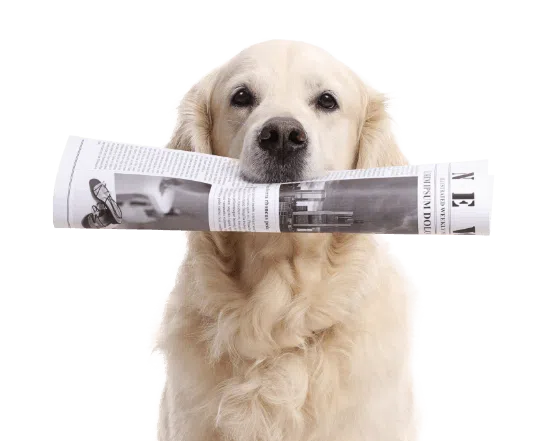A substantial part of a modern veterinary revolves around its picture archiving and communication system (PACS). Being able to efficiently access, store, and share images creates direct and cascading benefits. Veterinary radiology demands an optimized solution to prevent negative outcomes and effects, including:
- Delays in accessing, storing, and sharing patient images
- Costly upfront hardware and maintenance
- Cybersecurity risks and authorization issues
- Lost revenue due to inefficiencies
- A poor reputation for customer service and referrals
- Unnecessary stress on staff, leading to poor staff retention
Being aware of what to look for can help prevent these outcomes and open up new avenues for better patient care and increased revenue. Let’s explore the importance of using a modern PACS as it pertains to efficiency and the cascading effects that can occur.
Accessible Images and Data
For an effective practice, a modern PACS must be able to optimize the accessibility, storage, and shareability of patient data.
Any inefficiencies create negative effects, leading to downtime, lack of staff productivity, reduced focus on better patient outcomes, and so on. Additionally, compatibility issues due to proprietary software and storage protocols from multiple vendors can further delay the process of transmitting data between practices
Choose a PACS that guarantees:
- Maximum uptime (at least 99%)
- Secure storage that uses lossless imaging
- Reduced storage space
- Regular system maintenance and updates during non-operational hours
- Efficient protocols for transferring DICOM and non-DICOM images
- Mobile accessibility through a vendor’s app for access to images on any platform or device, anytime, anywhere.
For these reasons and more, it is important to request a live demonstration of the PACS to ensure that it is capable of handling all types of modalities and manufacturers. During this demo, your staff can gain an understanding of how the PACS operates and how it can improve your workflows due to increased accessibility.
Benefits:
- Less time wasted due to downtime or inaccessible images
- Better patient diagnoses due to accurate imaging
- More referrals from other veterinarians and healthcare providers, who enjoyed an improved collaboration experience
- Optimized workflows for less stress and frustration for the staff, leading to better outcomes and less burnout
Automated Workflows
Modern PACS use technologies such as artificial intelligence, machine learning, and encryption to automate everyday processes that affect every department of your veterinary practice. Since revenue has increased for veterinary practices due to the COVID-19 pandemic, being able to dedicate more time to handling the increased demand from customers should be prioritized.
Automation can alleviate overburdening the veterinary staff by handling repetitive tasks such as scheduling times, sending reminders for checkups and follow-ups, and providing ready-made templates to decrease time spent creating reports.
Benefits:
- Unburden office staff and physicians of scheduling, setting reminders, and creating reports
- Automatic system updates versus manual updates
- Ability to increase profits due to more available time from staff
Essential Cybersecurity
Cybersecurity must be top of mind when choosing a PACS. While HIPAA compliance may not be required for veterinary practices at a federal level, every state in the United States has its own set of rules for confidentiality that must be adhered to. Having the same level of protection for animal patients is just as important to protect owner information and the financial security of your practice.
That said, veterinary practices are prime targets for cybercriminals. Consider the following statistics about cybersecurity and veterinary practices:
- An estimated 2.5 veterinary practices are targeted by ransomware and other cybersecurity attacks every week.
- The average cost per ransomware attack is between $130,000 to $370,000.
Cybersecurity is a crucial aspect that veterinary practices must invest in for their PACS. Look for the cybersecurity features that veterinary radiology practices typically require, such as encryption, hashing, and lossless compression algorithms, to ensure the highest levels of security and data integrity.
It’s also important that the PACS deploys continuous updates of its cybersecurity systems to meet the challenges of ever-evolving and increasingly sophisticated cyberthreats.
Benefits:
- Prevention of massive financial loss due to inaccessible data and liability issues
- Maintain access to patient data without interruption
- Peace of mind to help you and your staff focus on providing superior patient care
Conclusion
Now that you understand the impact and the cascading effects of an effective PACS, your veterinary radiology practices must take action when deciding on the right choice for efficient workflows.
Trusted by thousands of veterinary practices across a wide range of specialties, the Asteris Keystone Software Suite enables your practice to utilize the benefits of a PACS veterinary radiology software. This comprehensive all-in-one solution enables your practice to manage your images with unmatched speed, convenience, and security.
Here at Asteris, it’s our goal to help veterinarians make sound medical decisions with ease, clarity, and confidence by giving them the tools and insights that they need to optimize the way they work.
If you’re ready to stop feeling like there’s not enough time in your day, we can help you optimize your imaging processes and the way you work. Contact our specialists today to get started!
Book a Demo of Keystone Omni Now
Submit images directly through Asteris Keystone or via our free and simple Asteris Keystone Community application.
Blog
the latest Updates from Asteris
If you like this post you might like this
Subscribe to our newsletter
don't miss out the updates
from asteris
Sign up to our newsletter to stay in the loop.

